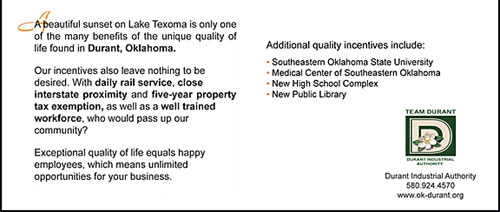conomic Development Zones go by many different names across the country, including Enterprise Zones (Virginia), Renaissance Zones (Michigan), Keystone Opportunity Zones (Pennsylvania), or Empowerment Zones (Federal Government). While names may vary, so also do the benefits to the corporate user. Essentially, these zones serve a similar purpose wherever they exist. The primary purpose behind the specialized zones is to create areas of special economic opportunity for job creation in areas that are in greatest need of employment growth. Once established, these zones serve as a focal point for economic development due to the unique benefits that accompany them. Attractive from a government prospective, these zones extend very aggressive incentive programs to narrowly targeting geographic areas in need of economic improvement. By extending more aggressive economic incentives to companies locating in these areas, governments can encourage higher levels of targeted growth in locations where the need is the greatest.
The Economic Development Zone concept has been around in different forms since the late 1970s. Each state with such zones has its own requirements relative to which types of companies may qualify and the benefits available. As the concept has evolved to meet the needs of modern economic development, these zones have become one of the most important tools in the economic development arsenal. Currently, a majority of the states as well as the federal government have some form of Economic Development Zone program.
There is, however, tremendous variation in the types of benefits provided to companies. The quality and types of locations of these zones vary widely also. Zones may provide low-cost sites, real estate tax abatements, corporate tax abatements or credits, or job training assistance above and beyond that available elsewhere in the state. From a corporation’s perspective, some zones can be a tremendous opportunity, whereas others have so many restrictions and provide so few usable benefits that it is easier and more beneficial to remain outside the zone.
An example of one of the best zones in the country can be found in Michigan’s Renaissance Zone program. The beauty of Michigan’s zone is in its simplicity. Renaissance Zones have virtually all state and local taxes eliminated initially and then gradually phased in over the duration of the life of the zone. While Michigan’s zones are among the most generous, many other states will exempt or refund various percentages of state and local taxes back to employers for limited periods of time.
Other states take a somewhat different tactic, in that instead of relying on the abatement of taxes to stimulate investment and job creation, they base their zones on job creation grants or tax credits which link the extension of benefits to the number of jobs created and the pay scale of those jobs. A good example of one such program would be Virginia’s Enterprise Zone program. Virginia’s program offers wage-based job creation grants, which increase in value depending on thresholds above the federal minimum wage. Space does not permit a full evaluation of all the zone programs in the nation. All have some significant advantages. However, all are not created equally and some are significantly better than others.
While Economic Development Zones can be a tremendous tool for economic development, many of the zones across the country can have problems associated with them that site selectors and their corporate clients should know.
Low desirability locations – One of the significant problems that zones often experience is that many are located in blighted areas. Sometimes the location is so problematic relative to crime, infrastructure, access or employment accessibility that no amount of tax abatements will make the property a viable location for most companies.
Time limits for zones – For some zones, benefits start the day the zone is established and end on a specific date. Thus, a company moving into an older zone may have a very limited time to take advantage of the zone’s benefits. The best zones are those in which the time limit for benefits begins when a company moves into the zone, allowing the firm to receive a full term of benefits. Beware of the state or community that states that they are confident the zone’s conclusion date will be extended. These state programs generally require legislative approval, which is not always easy to achieve.
Income tax credits – Economic Development Zones that rely on income tax abatement tend not to be as effective as those that abate real estate taxes or provide job creation grants. The difficulty with income tax abatements is that, after relocation or expansion, a company may initially operate at a deficit, thereby receiving no benefit in the crucial early years of a new operation. Often the tax abatements are at their highest level during the first few years of occupancy and diminish over time.
Companies considering moving into an Economic Development Zone need to approach with caution and with the advice of an independent site selection expert with experience with state and local incentives and Economic Development Zones. Such an advisor will make sure that the location is suitable for the long-term viability of the operation. Some short-term economic incentives may sound very attractive while they last, and may compensate only temporarily for a location’s other shortcomings. Don’t lose sight of those long-term factors (e.g., labor, transportation, taxation, utilities) that may haunt the operation after the short-term incentives fade into the sunset. Your advisor will also let you know which of the benefits in the Zone you will actually qualify for; companies are often shocked to discover after moving into a zone that they either don’t qualify for certain benefits, or that the value of the benefits is substantially less than anticipated. It is unusual to find a state’s Web site description of their Economic Development Zones that is complete, and some are misleading.
Economic Development Zones can be very attractive, and they can make a good location an outstanding location. Economic Development Zones can be very powerful in terms of attracting employers and also in helping them to be successful. For a community and for employers, well-structured and well-located zones can have considerable benefit. As Economic Development Zones continue to evolve to meet the needs of business, their importance in a well-rounded economic development portfolio will increase.

